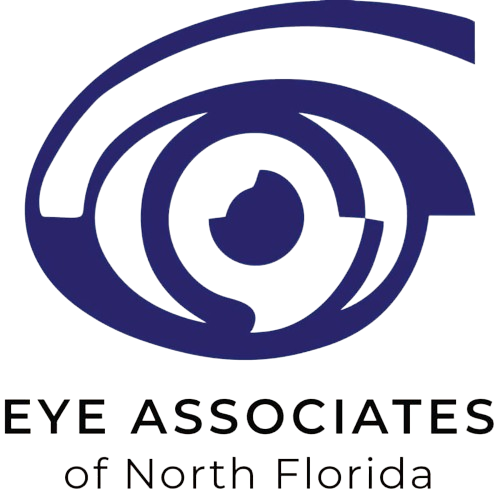What Happens During a Routine Eye Exam?
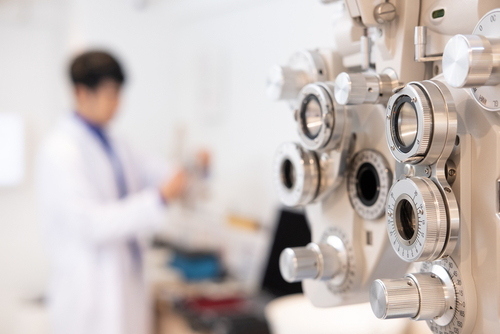
Do you have an eye exam coming up? Regular exams are important for maintaining healthy eyes and clear vision.
For most adults, it’s recommended that you get an eye exam at least every couple years. Your eye doctor may recommend more frequent exams if you wear glasses or contacts, have a chronic eye condition, or have an increased risk of developing one.
Many people wonder what exactly an eye exam entails. Keep reading to learn what happens during a routine eye exam!
Will I Get a New Prescription at My Routine Eye Exam?
If you already wear glasses or contacts, your doctor can give you a new prescription during your exam. Most prescriptions expire after a year or two.
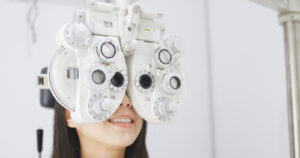
Be sure to bring your eyewear with you so your doctor can evaluate how well it is working for you. As you age, your eyes change, so you may need to have your prescription updated.
Vision changes may be subtle. You may not even notice that your vision has lost some sharpness until your exam.
Your prescription indicates the lens power needed to correct your vision. Your glasses prescription differs from your contact lens prescription. To determine your prescription, your eye doctor will have you look through a machine called a phoropter.
A phoropter contains lenses of varying powers. They will place different lenses in front of your eyes and ask which is clearer.
If you have not worn glasses or contacts before but think you may need them, you will also be able to get your first prescription during your exam.
Will I Be Dilated During a Routine Eye Exam?
Dilation is part of any routine eye exam. For dilation, eye drops are used to widen your pupils.
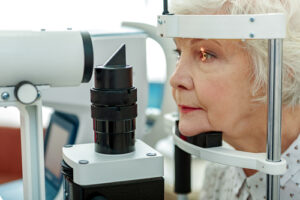
Your pupils allow light to enter your eye so that it can reach the retina. They change size, widening in dim conditions to let more light in, and shrinking in bright conditions, to limit the amount of light entering the eye.
Dilation eye drops usually take fifteen to thirty minutes to take full effect. With your eyes dilated, your eye doctor will be able to better view the small structures of your eye, particularly, the optic nerve and retina.
A dilated eye exam is vital for checking that your eyes are healthy. Your pupils will remain dilated for a period of four to six hours.
Since your eyes will be extra sensitive to light during this time, bring sunglasses to your appointment. You may also experience some blurriness, so it’s a good idea to plan for someone else to drive you home.
What Can I Expect During a Routine Eye Exam?
During your eye exam, your doctor will evaluate your eyes and vision using a range of methods. They will also discuss your personal and family health history and ask about any concerns you may have about your vision.
An eye exam typically takes between a half hour and an hour to complete. An important part of an eye exam is the measurement of your visual acuity.

Your eye doctor will ask you to read letters of decreasing size from a chart. This tests how well you can perceive objects from some distance away.
The exam will then move on to a refraction test. As described above, they will have you look through a phoropter. This determines whether you need corrective lenses, and, if applicable, your prescription.
Your eye doctor will also test your eye muscles by asking you to follow a pen or a similar object as they move it across your field of vision. Another aspect of your eye health that your doctor will measure is your eye pressure.
Increased eye pressure can be a sign of glaucoma. A slit-lamp microscope allows the doctor to closely examine the different structures of your eye, including the eyelid, cornea, iris, and lens.
After dilation, they will examine your retina and optic nerve as well.
What Eye Conditions Will My Doctor Test For During a Routine Eye Exam?
An eye exam is an opportunity for your eye doctor to check for a variety of eye conditions. Some conditions cause few or no noticeable symptoms in their early stages, so regular exams are crucial to your health.
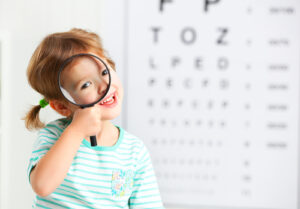
The earlier a condition is diagnosed and treated, the better the outcome.
In addition to refractive errors, including nearsightedness, farsightedness, astigmatism, and presbyopia, your doctor will look for signs of conditions like dry eye syndrome and misalignment.
They will also check for any indications of cataracts, glaucoma, and retinal conditions, such as retinal disease and macular degeneration. If they suspect a condition, they may perform additional tests.
Regular eye exams are essential for detecting any sight-threatening eye conditions early. For this reason, it is very important that you make it to your routine eye exams.
Is it time for your next routine eye exam? Schedule an appointment at Eye Associates of Tallahassee in Tallahassee, FL, today!
